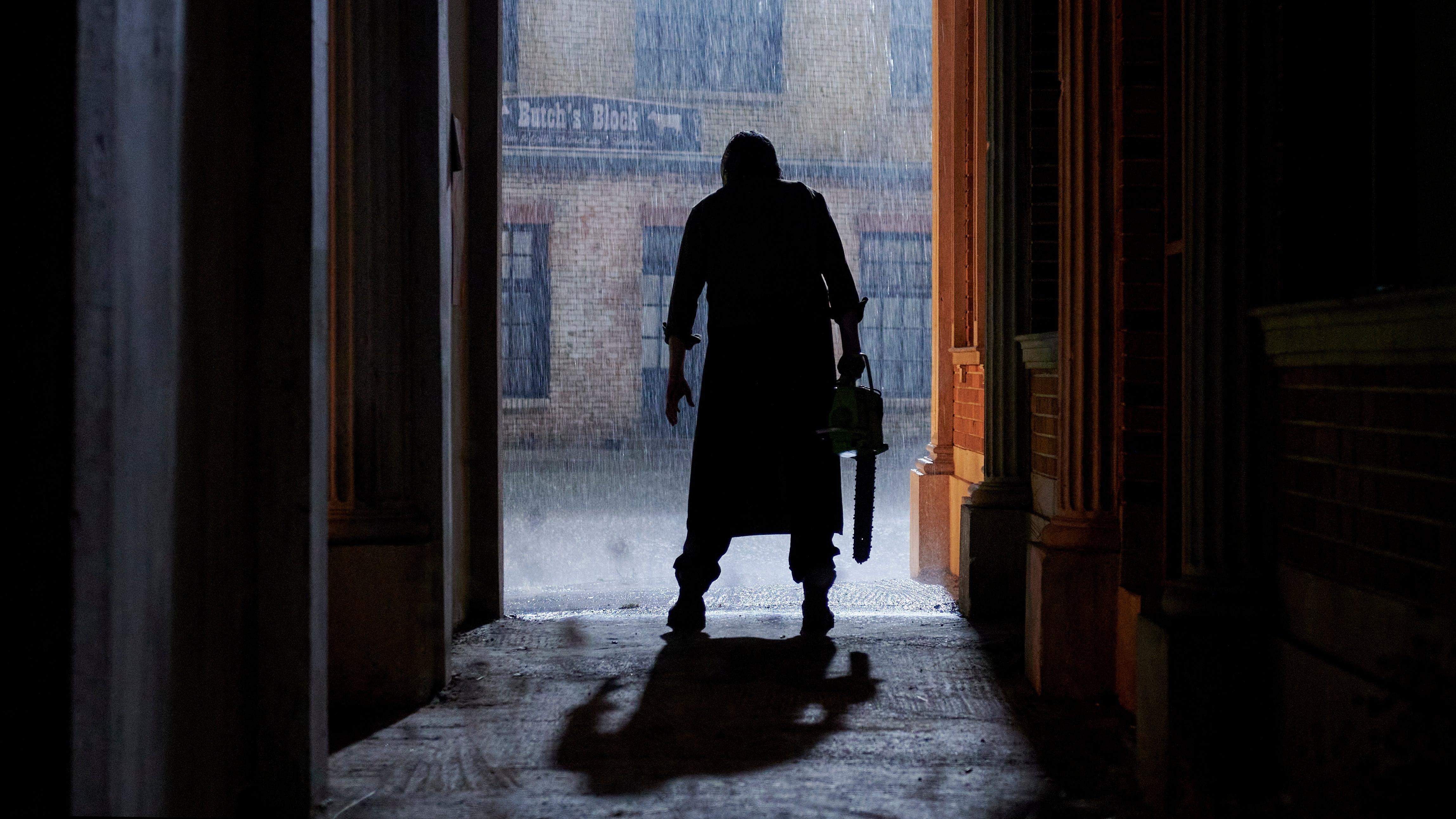Netflix massacres Texas Chainsaw with a lousy legacy sequel
Old Man Leatherface chases some kids off his lawn in this Halloween-biting revival


Netflix’s Texas Chainsaw Massacre leaves little to the imagination. That goes, first of all, for its violence—an orgy of splintered bones, lopped-off limbs, and mutilated faces. In the gore department, this umpteenth sequel has much more in common with the MPAA-incensing slasher movies of the ’80s than it does with Tobe Hooper’s original 1974 backwoods nightmare, whose title promised carnage it often implied instead of outright depicting.
The new Chainsaw is more explicit in another respect, too. It takes all the subtext of Hooper’s movie—the class tension bubbling underneath its screaming madness and murder—and grinds it into blunt text. Call that a real sign of the changing times: If grisliness in horror has fluctuated over the years, there’s no mistaking the way the genre has increasingly made mincemeat of subtlety this past decade. Every chainsaw massacre now wants to be about more than just the massacre. And this one announces its “messages” as loudly as a power tool revving and roaring in the dead of hellish night.
Here, once more, a group of fresh-faced city slickers steer off the beaten path and into certain doom in the boonies. This time, though, they’re literal gentrifiers: a group of young entrepreneurs who have snatched up the vacant properties of Harlow, a real Texas town that disappeared off maps in the 1930s. Their aim? To found a bohemian-hipster paradise, a new Williamsburg of the Southwest. “Behold the horrors of late-stage capitalism,” one of the zoomers says aloud, butchering any possibility that this trend-chasing franchise relaunch might let its themes speak for themselves.
Unfortunately for the interlopers, the slim population of Harlow includes an elderly but far from decrepit Leatherface. Almost 50 years after the events of Hooper’s movie, the rest of the Sawyer clan is long gone. Its lone surviving member now lives in an abandoned orphanage, under the care of a kindly old woman (Alice Krige) the kids unwisely, unwittingly evict. What’s more improbable than a squealing cannibal laying low for half a century, domesticated out of his fondness for cleavers and sledgehammers? How about that the madman, now 75 if he’s a day, still moves with the speed and power of an alpha predator? The big guy must be on the same vitamin regimen as his kindred spirit in geriatric killing sprees, Michael Myers.
As written by Chris Thomas Devlin, working from a story by Fede Alvarez and Rodo Sayagues (a.k.a. the pair responsible for the equally bloody Evil Dead remake), this new Massacre wants to be the new Halloween so badly it might as well be wearing a mask made from Jamie Lee Curtis’ face. Like that overpraised hit, the film has been conceived as a “direct” sequel, wiping from the continuity every Texas Chainsaw since the first—including the 3D installment from about a decade ago that took the same tact. Isn’t it kind of arrogant to position your movie as the only proper follow-up to an iconic original and then make the same blunders as the films you’re retconning? Netflix’s version certainly doesn’t much resemble its ’70s inspiration. Visually, director David Blue Garcia takes more cues from the 2003 remake, lending a beatific sheen to cornfields and rustic buildings—a look that approximates how the characters themselves might frame and filter the Texas scenery on Instagram.
In the most shameless lift from the David Gordon Green reboot plan, the movie arranges a rematch between its hulking killer and the Final Girl that got away, hardened by age and trauma into a vengeful survivalist. Sally, who’s been hunting Leatherface her whole life, is played by Olwen Fouéré, filling in for the late Marilyn Burns. It’s a perfectly solid performance, but there’s no denying that this kind of legacy-sequel maneuver is much more affecting when the role can be reprised by the original actor—and when it’s not so underwritten. Chainsaw sets up the reunion with a hastiness that only flatters nü-Halloween, which at least took the time to establish the life the older Laurie Strode was living before her masked arch-nemesis ambled into her crosshairs.
In truth, the Old Sally stuff feels sutured, skin-suit-style, into an obvious patchwork of underdeveloped ideas. The movie can’t settle on one talking point, so it runs down a whole list of them: urban renewal, Confederate pride, liberal guilt, cancel culture, “feral hogs.” The most confused and questionably considered of its “timely” angles is the decision to make one of the heroes, played by Eighth Grade’s Elsie Fisher, a mass shooting survivor. If this is a commentary on gun violence in America, what are we to make of the triumphant moment when she overcomes her trauma by picking up a rifle and aiming it squarely at the new threat? The wrong question, perhaps, for a movie that wants to be topical but has no real perspective on its topics.
The original had a political conscience, of course—the extra meaning a viewer might glean from the clash between its carload of middle-class victims and a homicidal family of slaughterhouse workers put out to pasture by the automation of their industry. (The UK censors certainly sensed a subtext, banning the film because of what they feared it might stir in factory workers everywhere.) But Hooper, again, had the good sense not to foreground all that. He made a horror movie first—one that remains basically unparalleled, all these years later, in the depths of dread and derangement it reaches.
Is this the worst Massacre yet? There’s stiff competition for that title in a trough overspilling with unnecessary sequels, pointless remakes, and two separate misguided attempts to tell us why a young farm boy first picked up a chainsaw and started aiming it at nubile trespassers. So let’s put it another way: It might be the furthest any filmmaker has strayed from what made the original so timelessly terrifying—the way it barely seemed to function like a “normal” movie, especially in the spiraling, plotless panic of its hysterical final stretch. This time around, Leatherface is just a run-of-the-mill bogeyman, slaughtering a new generation of lambs for the sins of our age. It’s a sequel as pretentious as its chainsaw fodder: an act of genre gentrification.